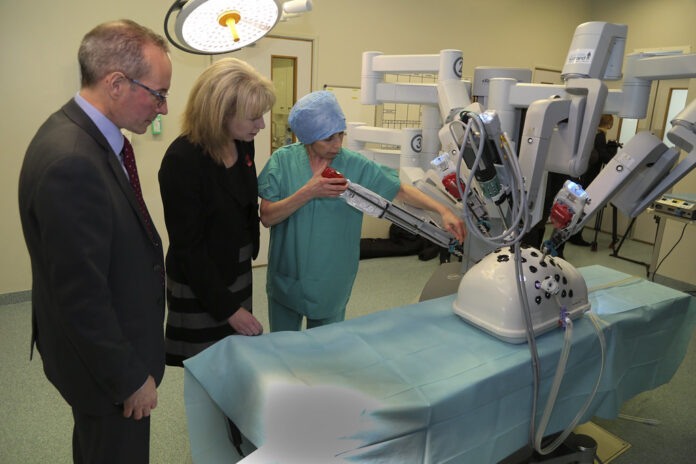Medical robotics is revolutionizing the landscape of healthcare, transforming surgery, rehabilitation, and patient care with unparalleled precision and innovation. This comprehensive exploration delves into how these technological marvels are reshaping medical practices, offering new horizons for patient treatment and recovery.
In the Realm of Surgery: Precision Meets Innovation
The advent of surgical robots has ushered in a new era of minimally invasive procedures, dramatically enhancing patient outcomes and recovery times. The concentric tube robots, as developed by leading experts, exemplify this advancement. These devices, characterized by their flexibility and precision, can navigate the body’s intricate pathways, allowing for surgeries previously deemed highly challenging or impossible. Such innovations not only improve the accuracy of surgical procedures but also significantly reduce the trauma and recovery time for patients (Harvard Magazine).
Seeing Beyond the Surface: Enhancements in Surgical Vision and Feedback
Modern medical robotics also extends the surgeon’s capabilities beyond human limits. Innovations in three-dimensional imaging and haptic feedback technologies now allow surgeons to ‘see’ and ‘feel’ in ways that were not possible before. These technologies integrate advanced imaging techniques like MRI and CT scans with real-time surgical procedures, offering a detailed view of the surgical area and precise location of tumors. This significantly improves surgical outcomes by enabling the removal of tumors with greater accuracy while preserving healthy tissues (Harvard Magazine).
From Recovery to Mobility: Wearable Robots Transform Rehabilitation
The domain of rehabilitation is witnessing a transformative change with the introduction of soft, wearable robots. Designed to assist stroke patients and others with mobility challenges, these devices are a testament to the field’s focus on patient-centric innovations. By providing the right amount of assistance at crucial moments, these robots can help patients regain mobility, drastically improving their quality of life post-stroke or injury (Harvard Magazine).
The Future Beckons: AI and Nanorobotics
Looking ahead, the integration of artificial intelligence (AI) and the development of nanorobotics are poised to further push the boundaries of what’s possible in medical robotics. AI’s role in enhancing navigational capabilities and automating surgical procedures is particularly noteworthy. This, coupled with the advent of nanorobots capable of performing tasks within the human body, such as drug delivery and tissue repair, heralds a future where surgeries are more precise, less invasive, and potentially autonomous (The Robot Report).
Challenges and Opportunities
Despite these advancements, the field of medical robotics faces challenges, including high costs, the need for extensive training for healthcare professionals, and regulatory hurdles. However, the potential benefits to patient care, surgical outcomes, and the overall efficiency of healthcare delivery continue to drive innovation and adoption.
Conclusion: A New Dawn in Healthcare
Medical robotics stands at the forefront of a healthcare revolution, offering promising new treatments and recovery options. As technology advances, the synergy between medical expertise and robotics promises a future where healthcare is more precise, less invasive, and tailored to the individual needs of patients.





